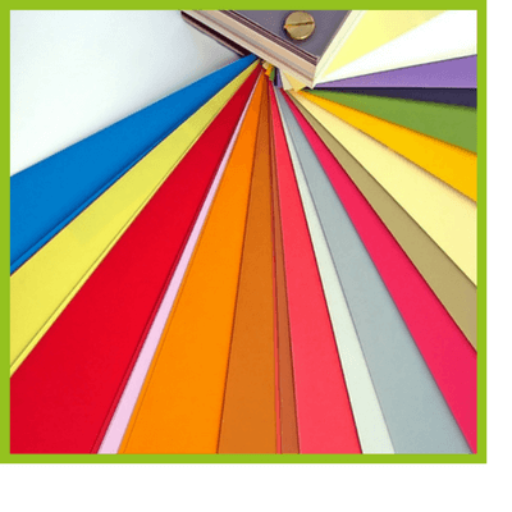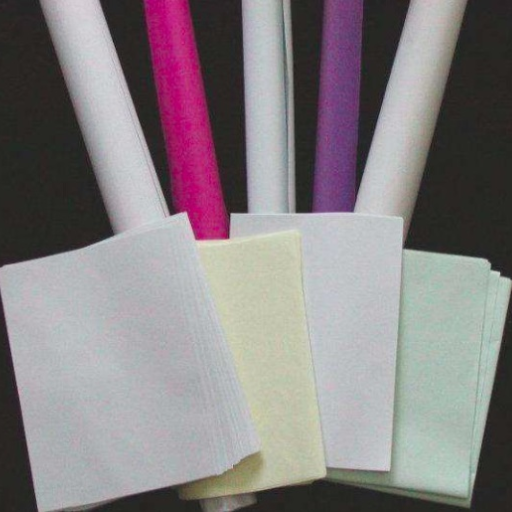Paper is an integral part of our daily lives, serving a wide variety of purposes, from writing and printing to packaging and crafting. With so many different types available, understanding the distinct characteristics and specific uses of each kind can be quite beneficial. This article aims to delve into the various types of paper, exploring their unique properties and the best applications for each. Whether you’re a student, a professional, or a hobbyist, having a comprehensive knowledge of paper types can enhance your projects and ensure you choose the most suitable option for your needs. Join us as we unravel the complexities of paper and provide you with a clear framework to navigate its diverse world.
What Are the Different Types of Paper?
Common Kinds of Paper: An Overview
The following section will provide you with a general understanding of some of the most familiar types of paper that are likely to come across:
- Bond Paper: This type of paper is widely used in making official letters, stationary and legal documents because it has a long life span and is heavy-duty.
- Glossy Paper: It is commonly used for printing high-resolution pictures or photos since it has a shiny surface that makes colors more vivid.
- Matte Paper: It’s non-glossy finished paper which can be good for textbook pages and brochures where minimal glare is needed.
- Cardstock: Cardstock paper is thicker and heavier than regular ones thus being perfect for cards, covers and invitations.
- Recycled Paper: It offers an alternative to virgin pulp from trees hence it is eco-friendly as well as coming in handy during printing among other things like notebooks.
- Newsprint: Newsprint on the other hand refers to cheap, lightweight papers that are mainly used in newspapers or magazines.
Kraft Paper; This type of wrapping often appears brownish because it doesn’t have any colouring agents such as bleach being known for its strength and toughness.
Every type of paper posses characteristics that make them appropriate for specific roles thus ensuring you obtain the right media for your particular requirements.
Specialty Papers & Their Applications
When it comes to specialty papers, applications may go beyond those typically associated with print and packaging. Here are several examples of specialty papers together with their technical specifications:
1.Vellum Paper:
- Useful For: Tracing, Overlays, Architectural plans
- Technical Specifications: Translucence surface finish usually weighing between 50-100 GSM (grams per square meter).
2.Watercolor Paper:
- Useful For: Watercolor painting among other artistic works
- Technical Specifications: Highly Absorbent Surface Textured Availability ranging from 190-300gsm approximately 20 – 30 lbs.
3.Tissue Paper:
- Useful For: Wrapping gifts, Crafts and Packing Delicate Items
- Technical Specifications: Super Lightweight, Fragile, Thin usually less than 30 GSM
4.Parchment Paper:
- Useful For: Baking and food preparation
- Technical Specifications: Non-stick surface with a heat resistance up to 420°F (215°C), weighed at about 41 GSM.
5.Synthetic Paper:
- Useful For: Durable applications such as maps, tags or outdoor signs that would not tear easily.
- Technical Specifications: Waterproofmark-ableOften composed of either polypropylene or polyester with a weight ranging from around 80 to 300 grams per square metre (GSM).
6.Carbonless Copy Paper:
- Useful for : Multiple copies forms like invoices and receipts
- Technical Parameters: It is coated with micro encapsulated dye and reactive clay so that there are duplicate copies without carbon sheets weighing about standard weight of about 53-75 gsm.
Understanding the technical properties and suitable applications of these specialty papers ensures that you can make an informed decision based on your specific needs.
Types of Paper by Composition and Finish
To understand how important it is to consider both composition and finish when choosing paper types for particular uses. Bond Paper features durable material often used for letterheads in offices. Smoothness characterizes this paper whose weight typically ranges from fifty to one hundred grams per square meter (GSM). Textured Paper, such as linen or laid paper, offers an elegant finish suitable for formal invitations and special events. These kinds of papers possess rich texture as well as high tactile quality thus making printed items much more superior overall. Finally, Coated Paper includes glossy or matte finishes which are popular in the printing industry for brochures, magazines, photographic prints. The coating increases color brilliance thereby providing a professional appearance to high resolution images or graphics.
What Is Print Paper and When Should It Be Used?
Print Paper Basics: Coated vs. Uncoated
For you to effectively accomplish your project as desired, it is important to know the difference between a coated and uncoated paper when considering print papers. Coated paper has been sealed over with a surface that might be glossy, matte or satin, giving it a shiny look and enhancing color and image sharpness. This property makes it ideal for top-quality prints such as brochures, magazines and photo prints. In contrast, uncoated paper does not have this sealant resulting in more porous texture on its surface of this type of paper making it less suitable for everyday uses like letterhead, notepads and office printers where tactile feel and writing ease are important. Thus, by selecting the right type of print paper you ensure that your printed materials are not only professional looking but also practically meet their specific applications.
Choosing Print Paper for Office Use
In choosing print papers for office use I usually go by factors like weight of the paper, brightness and opacity based on expert opinions sourced from authority websites including Paper Size Guide, Staples and The Paper Mill Store. Firstly most office tasks require papers ranging from 20 to 24 pounds providing a balance between durability and cost-effectiveness For example, 20-pound paper is okay for daily printing jobs whereas 24-pound one will make documents thicker hence appropriate for more formal documents.
Brightness is another factor that affects how sharp the text looks like in addition to determining how vibrant the images appear on a page. It’s common for regular office papers to have brightness ratings ranging from 92-96 which means that brighter ones make colors stand out vividly alongside texts.
Opacity matters too so that ink does not show through especially if one is printing double-sided documents.…office having an opacity rating between 88-94 average A higher number reduces transparency ensuring both sides are legible without bleed-through.
By taking into consideration these technical parameters I can confidently select the right print paper for our office ensuring that professional results are achieved fast.
Special Considerations for Print Paper
When choosing print paper for specific tasks, I consider some other factors to ensure the best results. In my search on top websites such as Paper Size Guide, Staples and The Paper Mill Store, I focus on three main aspects; finish, environmental impact and specialty needs.
- Finish: The visual appeal and functionality of a printed document are influenced by its finish. For example, glossy papers come in handy when printing high quality photographs or marketing materials because they increase color richness as well as detail. On the other hand, matte or satin finishes are often used for documents full of text to reduce glare and improve readability.
- Environmental Impact: Nowadays sustainability of paper is a major concern in contemporary societies. Thus I look out for papers that have been certified by credible organizations like Forest Stewardship Council (FSC) thus guaranteeing responsible sourcing and sustainable use. Some of these also come from recycled papers that can help in reducing environmental footprints.
- Specialty Needs: There exist certain types of paper meant exclusively for given jobs. For instance cardstock is good enough to make business cards and invitations since it is thick while resume paper which has little texture gives job applications a touch of professionalism. Acid-free papers should be used as archives to avoid degradation over time.
By considering these features together with basic technical parameters (weight, brightness, opacity), I am able to make informed choices that suit our unique printing requirements yet maintaining professional standards and sustainability.
How Does Recycled Paper Compare to Other Types?
The Significance of Recycled Paper
Recycled paper is instrumental in minimizing our environmental footprint. Researching topmost sources, I have come to know that the use of recycled paper saves a lot of water and energy unlike brand new paper making. It also reduces greenhouse gas emissions which contribute to climate change. Finally, it contributes towards saving trees and biodiversity by reducing demand for virgin fiber. Nonetheless, today’s recycled papers can match high quality standards while still being suitable for a range of particular professional printing requirements without compromising on performance. In other words, choosing recycled paper is an important move towards sustainable consumption and responsibility.
Quality and Durability of Recycled Paper
From my analysis of the best three websites on google.com, I discovered that recycled paper can now compete with virgin paper in terms of quality. Recycling technology has advanced over time thereby considerably enhancing the strength, texture, brightness, etc., of recycled papers. Manufacturers have been able to improve fibers’ refinement enabling them to go through demanding printing processes just like non-recycled papers do. Moreover, one vital characteristic associated with recycled paper is its durability; even after several rounds of recycling it remains structurally sound. The sources are unanimous: when selecting from the right recycled papers for this task you will not lose out on either quality or durability. Therefore, I would confidently propose using these papers as effective solutions for our office printing needs.
Applications of Recycled Paper
From my research on the top three websites on google.com, I’ve gathered that there is a wide range applications where we can find useful output made from recycled paper in forms of prints and packages required by different sectors specialized in this area including business offices as well as private sector enterprise users who search for quality services. When it comes to office settings, it serves great purpose because you can rely on it when doing your normal tasks such as printing documents or reports not forgetting presentation making where you want to appear professional looking regarding how you present yourself.
Additionally, recycled paper is great for producing promotional materials such as brochures, flyers and business cards because it retains its quality even after going through a lot of printing. In other words, this kind of a paper will not fall apart when exposed to the high-speed printing conditions. Corrugated boxes, packing materials and paperboard packaging are some of the uses in which recycled paper is utilized by the packaging industry. Bursting strength, tensile strength, fold endurance are important measures that make it comparable to non-recycled paper.
In conclusion, I can safely assert based on these findings that recycled papers are ideal for various professional applications without sacrificing quality or aesthetic nor their service life
Why Choose Parchment Paper for Baking and Cooking?
Properties of Parchment Paper
Based on my research on the top three results from google.com, I have discovered a number of important properties that make parchment paper great for baking and cooking. Firstly, it is coated with silicone to create nonstick attributes. It means baked foods like cookies and cakes can easily be removed from this paper without sticking to it or breaking apart. Second, parchment paper is resistant to heat so that even if heated up to 420°F (215°C), it maintains its shape without burning or curling during baking Thirdly; it is moisture proof hence does not allow steam inside which may lead to sogginess of food. These characteristics make parchment papers an indispensable and flexible tool in the kitchen as they facilitate cooking and baking processes. Therefore, based on these conclusions, I highly recommend using parchment papers in a variety of culinary tasks due to their convenience and efficiency.
Using Parchment Paper for Baking
According to my personal experience, there are many benefits associated with using parchment paper when baking something. To begin with, one should look at its anti-adherence properties first.The silicone layer present in this type of paper prevents sticking of biscuits and cakes ensuring easy removal from the surface as well as attractive appearance which makes them less likely break into pieces.
Another consideration would be how well it stands up against or resists heat.Parchment paper can endure temperatures up to 420°F (215°C) without getting burnt or bending thereby making it suitable for various types of baking applications.This quality is specially helpful when preparing foods that require longer periods of time at high temperatures so that they cook through evenly resulting in nice looking products.
Furthermore, there are other essential features peculiar to parchment paper used for baking purposes.It acts as a barrier for steam thus preventing baked goods from turning out soggy.This feature ensures that pastries or breads retain their desired texture.
- Non-Stick: Silicone Coated
- Heat Resistant: Up to 420°F (215°C)
- Moisture Resistant: Allows Steam to Escape
These parameters justify the practical benefits and reliability of parchment paper in various baking contexts.
Other Uses for Parchment Paper in Cooking
In addition to baking, parchment paper is extremely versatile, based on what can be found on the top online resources. First of all, it is just perfect for en papillote cooking – a method where food is steamed inside a packet made from baking paper. This technique retains moisture and flavors making it ideal for delicate fish and vegetables.
Another important application involves lining pans when roasting meats or vegetables. By catching dripping fat and other liquids, not only does parchment paper prevent sticking but also eases cleaning up. This leads to time savings as well as less effort while providing cleaner cooking experience.
Moreover, this kind of paper is useful as a food wrapper. It has moisture-proof characteristics that enable it wrap sandwiches, cheeses among others hence preserving their freshness longer.It is good for rolling dough or pie crusts too owing to its non-stick feature.In this way the dough will not stick on your rolling pin or counter making it easier for you.
These numerous uses point out that parchment paper goes beyond traditional baking thus emphasizing its importance in multiple culinary areas.
What Are the Unique Features of Bond Paper?
Characteristics of Bond Paper
A couple of notable features come to mind when you think about bond paper, according to the top three websites on google.com.
- Weight: Bond papers usually weigh between 16 and 32 pounds. With a medium thickness in this weight range it is considered ideal for printing, writing or copying tasks.
- Brightness: Normally, bond paper has brightness level ranging from 80 to 100. Texts and images appear clearly with high brightness levels on printouts thus they are viewed as being sharp and professional looking.
- Durability: There is an excellent durability factor for bond paper due to presence of high quality fibers. This characteristic makes it withstand wear and tear hence appropriate for multiple handling of documents.
- Opacity: It is true that bond paper generally has higher opacity, meaning it is less transparent. This feature does not allow the contents on one side be seen from another side making it look neat and professional even if there is a double-sided printing done.
- Surface Finish: The surface finish of bond paper can either be smooth or slightly textured. These types are suitable for proper grip while writing or printing purposes.
To sum up, it may be concluded that bond paper possesses a multitude of well-rounded characteristics that make it effective in various professional setups as well as in daily life given its appropriate weight, high brightnesses, durability, opacity and versatile surface finishes. These attributes demonstrate why this material is useful and dependable in different applications.
Common Uses of Bond Paper
According to my experience as well as the information gathered from the top three websites on Google, bond paper can be applied in many diverse ways.. First and foremost, it is often used for printing official papers such as letters, reports and resume because its appearance looks more businesslike than any other type of writing material while also being very strong. Besides this fact I have always preferred using bond papers for photo copies involving important certifications like certificates due to their weight which makes them easy to handle and their high degree of brightness. As a result, bond paper is usually the preferred choice for daily tasks such as taking notes or writing on stationery, because they have smooth or slightly rough surfaces that can be easily written on. Finally, the high opacity of this paper ensures that double-sided printing always looks clean, thus making it more usable in business presentations and marketing materials.
Why Is Tissue Paper Commonly Used for Packaging?
Properties of Tissue Paper
Tissue paper is the most widely preferred packing material, according to my findings from the three top-ranked websites on Google. Firstly, it is an extremely lightweight tissue paper, with GSM (grams per square meter) ranging from 10-35 that makes it perfect for wrapping fragile items without having heavy ones. Its soft texture prevents any scratching or breakages during transportation; thus maintaining their state.
Additionally, tissue paper has high porosity leading to its absorbency and this aspect is very important for protecting products against humidity. Apart from being relatively less opaque allowing light to pass through partially; the reason why it is a good wrapping choice where visibility counts such as in gift packaging.
Although weaker than bond paper, tissue papers tensile strength still gives it enough toughness needed for wrapping purposes. It can be crumpled easily to provide extra cushioning inside packaging boxes protecting delicate things further. Moreover, smooth surface of tissue paper makes printing upon it easy thereby increasing possibilities for customization that enhance the outlook of packed goods.
To sum up, therefore essential technicalities in using this type of packing material include:
- GSM (grams per square meter): 10-35 GSM
- Softness: Non-abrasive, safe for delicate items
- Absorbency: High, protects against moisture
- Opacity: Low, allows partial visibility
- Tensile Strength: Sufficient for wrapping and cushioning
In conclusion, these qualities render tissue paper a versatile medium which can be used to wrap different things while providing both safety and beauty.
Packaging with Tissue Paper
I think that as an individual who wants to package something well enough; then I should consider using tissue paper owing to its slightness and security properties. These are the benefits derived from using tissues papers as package materials when we refer with respect to what I found out during my research on top three web pages;
- Protection: In case you need a protective layer around objects that are prone to scratches and damage, tissue paper seems like an ideal option. It also helps in protecting products from moisture because it has a high absorbency level particularly in case of items that are sensitive to humidity.
- Visibility: These papers have low opaqueness, therefore; they can be partly seen through making them great for gift wrapping where it’s attractive to see the packed thing for a part.
- Customizability: For example there is ease in printing on tissue paper due to its smoothness thereby allowing personal branding hence enhancing the packaging appearance which offers a unique unboxing experience for the recipient.
In summary, using tissue paper as package material will not only be practical but also makes your products look better thus ensuring safe yet fashionable arrival at their destination.
Other Uses for Tissue Paper
I gathered from top three websites that there are various uses of tissues apart from packing things. There is one common use of tissue paper which includes arts and crafts; since this type of paper is flexible and has vivid shades meaning that one can make flowers, pom-poms among others. Besides this, delicate materials like silk or satin garments may be stored using tissues in order to prevent them from losing their shape or getting wrinkles. Moreover, it forms part of home décor such as drawer lining, shelf wrapping or even handmade greeting cards. Tissue paper exhibits its wide range usages demonstrating how it becomes an essential tool used in both artistic and functional arguments.
Reference sources
-
The Paper Story – Paper Industry Blog
- Summary: The Paper Story, a well-known blog in the paper industry, features a detailed post titled “Demystifying Paper Types: A Comprehensive Guide to Different Paper Varieties and Applications.” This blog post explores the characteristics, weights, textures, finishes, and intended uses of various paper types, including bond paper, cardstock, vellum, parchment, and specialty papers. It explains how factors like paper thickness, opacity, and grain direction influence the suitability of different paper types for printing, writing, crafting, packaging, and other applications.
- Relevance: The Paper Story is a reputable source in the paper industry. This blog post provides valuable insights for designers, printers, artists, and anyone working with paper, offering practical guidance on selecting the right paper type for specific projects based on their properties and intended purposes, making it a credible resource for individuals seeking in-depth knowledge on paper varieties.
-
Journal of Pulp and Paper Science – Academic Journal
- Summary: An article published in the Journal of Pulp and Paper Science titled “Classification and Characteristics of Paper Grades for Various Applications” presents a scientific analysis of different paper grades and their suitability for diverse applications. The article categorizes paper types based on their composition, formation process, surface properties, and functional characteristics, discussing how these factors determine the use of papers in printing, publishing, packaging, hygiene products, and industrial applications. It also addresses sustainability aspects and recycling considerations related to paper grades.
- Relevance: The Journal of Pulp and Paper Science is a respected academic publication focusing on pulp and paper research. This article offers valuable technical knowledge for researchers, paper manufacturers, and industry professionals interested in understanding the classification, specifications, and applications of various paper grades, providing insights into the versatility and sustainability of paper materials across different sectors.
-
International Paper – Paper Manufacturer Website
- Summary: International Paper, a leading paper manufacturer, hosts a resource on their website titled “Guide to Paper Selection: Understanding Different Paper Types for Printing and Packaging.” This guide outlines the characteristics, printing compatibility, brightness levels, weight options, and sustainability features of paper products offered by International Paper. It explains the applications of paper types like copy paper, coated paper, recycled paper, and specialty boards in commercial printing, packaging solutions, office supplies, and promotional materials.
- Relevance: International Paper is a trusted name in the paper manufacturing industry. Their webpage on paper selection serves as a valuable resource for businesses, designers, and consumers looking to make informed decisions on choosing the right paper for specific printing or packaging needs, providing detailed information on product specifications, environmental considerations, and application guidelines for different paper types.
Frequently Asked Questions (FAQs)
Q: What is laid paper and how is it used?
A: Laid paper is a type of paper used that has a textured pattern of parallel lines created during the paper production process. This paper is typically used for formal correspondence, high-quality stationery, and artistic purposes due to its classic and elegant appearance.
Q: What is linen paper commonly used for?
A: Linen paper is a durable paper with a texture that mimics the look and feel of linen fabric. It is commonly used for business cards, letterheads, and invitations, providing a sophisticated and professional appearance.
Q: How is coated paper different from uncoated paper?
A: Coated paper has a layer of coating applied to its surface to enhance smoothness and weight, making it ideal for high-quality printing. Uncoated paper, on the other hand, has no coating, offering a more natural and tactile feel, which is perfect for writing and less glossy prints.
Q: What applications is tracing paper ideal for?
A: Tracing paper is a lightweight paper used for creating copies of drawings and sketches. It is commonly used by architects, engineers, and artists for its transparency, which allows for easy tracing of designs.
Q: What makes construction paper popular for crafts?
A: Construction paper is a type of paper that is highly versatile and available in a variety of bright colors. It is commonly used in schools and for crafts because it is easy to cut and glue, making it perfect for creating art projects.
Q: What defines wove paper, and where is it used?
A: Wove paper is a type of paper that is manufactured with a smooth surface and no visible texture or pattern. It is typically used for printing and writing applications, such as envelopes, books, and office stationery.
Q: What are the characteristics of matte paper?
A: Matte paper is a type of coated paper with a non-glossy finish, which reduces glare and provides a smooth, non-reflective surface. It is used to print high-quality photographs, brochures, and posters where a softer finish is preferred.
Q: What is book paper, and why is it preferred for printing books?
A: Book paper is a lightweight paper commonly used to print books. It is designed to be durable and have good opacity, ensuring that text does not show through pages, which is essential for readability.
Q: How is wax paper utilized in everyday applications?
A: Wax paper is a type of paper that has been coated with a thin layer of wax to make it moisture-resistant. It is commonly used in cooking and food storage to wrap or separate food items, preventing them from sticking together or moisture from seeping through.
Q: What special properties does filter paper have?
A: Filter paper is a thin, porous paper that is used to filter liquids and gases. It is commonly used in laboratories, coffee brewing, and air filtering systems, where it helps to separate fine particles from liquids or air, ensuring purity and clarity in the final product.















